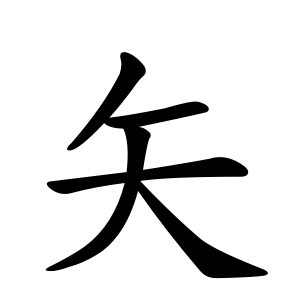矢
- arrow;
Etymology
It is a pictograph representing the arrowhead, shaft, and feathers of an arrow.
The meaning of 矢 has expanded to include arrows used in throwing games (like 투호), the act of displaying or arranging, making a solemn oath, and even a euphemistic meaning for feces (excrement). The latter meaning arose because 矢 was used as a phono-semantic loan character for "feces." Historical texts from the Warring States period show 矢 used with this meaning. Later, the character 屎 (meaning feces) was created with the same pronunciation, and 屎 gradually replaced 矢 as a euphemistic form. Both 矢 and 屎 are pronounced shǐ with the same tone in standard Mandarin.
Usage in Korean
Regarding arrows, 矢 usually refers to wooden arrows, while 箭 refers to bamboo arrows. In modern usage, 箭 is far more common when referring to arrows, and 矢 mostly appears in advanced HSK vocabulary. This provides a comprehensive view of 矢’s form, meaning, and usage distinctions.
When used as a radical, it generally conveys meanings related to arrows. Additionally, since arrows were historically used as units of measurement for length, it can also imply meanings related to length or correction/adjustment.
Similar shape characters
- 人大 (OK)
- ⿱ 𠂉 大
- ⿰ ㇒ 天
